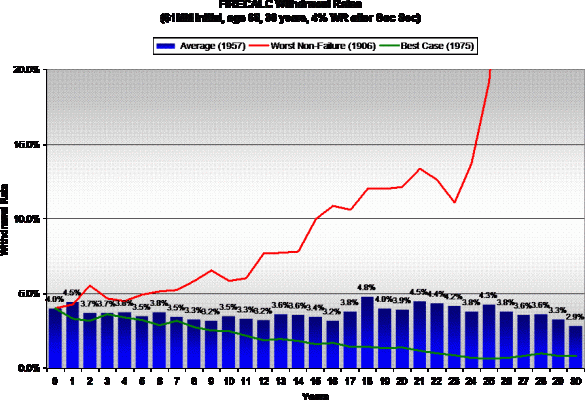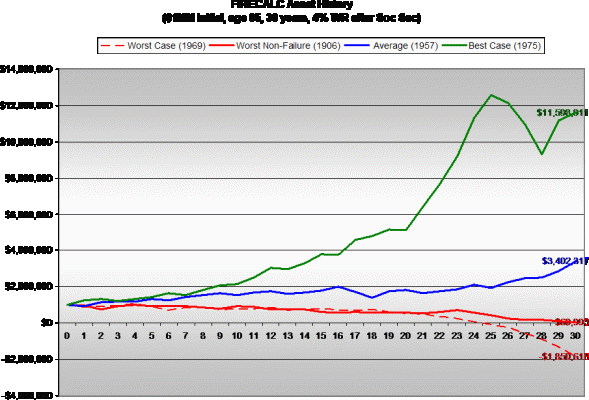Midpack
Give me a museum and I'll fill it. (Picasso) Give me a forum ...
Just for fun, I did a classic 4% SWR age 65 scenario to show what year to year withdrawal % would actually be for average, best case and worst case. Illustrates how wildly results can vary if a retiree were to just blindly follow the 4% rule without regard to asset balances (not that anyone would) - and how pinning down a bulletproof number in advance is out of the question. I was just curious to see the result in this format, thought maybe others might...
First chart is withdrawal rates for each year (expenses inflated by 3% each year) starting with 4% SWR and following the classic withdrawal methodology. Second chart is corresponding asset balances, same chart as FIRECALC provides except only showing 4 cases instead of all.
The point is not to examine the results, as much as comparing best, worst and average cases.
Assumptions:
Retired age 65
Plan duration 30 years (age 95)
Nest egg $1MM
Expenses $60K/yr initial ($40K withdrawal, $20K Soc Sec starting age 65)
Inflation 3%
FIRECALC probability of success 94.6%
Default asset allocation & returns
First chart is withdrawal rates for each year (expenses inflated by 3% each year) starting with 4% SWR and following the classic withdrawal methodology. Second chart is corresponding asset balances, same chart as FIRECALC provides except only showing 4 cases instead of all.
The point is not to examine the results, as much as comparing best, worst and average cases.
Assumptions:
Retired age 65
Plan duration 30 years (age 95)
Nest egg $1MM
Expenses $60K/yr initial ($40K withdrawal, $20K Soc Sec starting age 65)
Inflation 3%
FIRECALC probability of success 94.6%
Default asset allocation & returns




